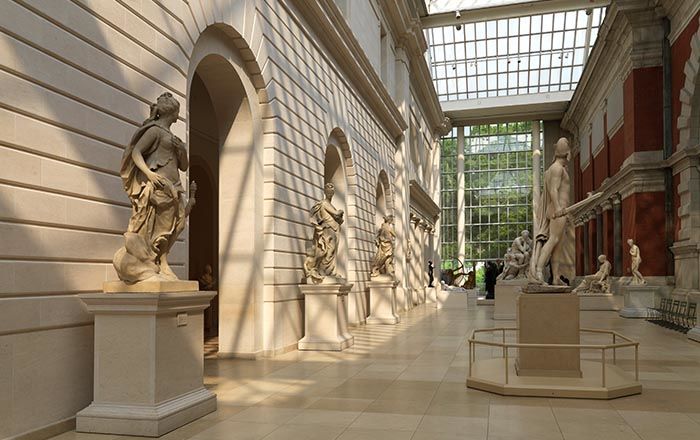Hot water jug
Not on view
This jug, likely designed to hold hot water for refreshing brewed tea, is decorated with pastoral scenes that have been carefully hand-colored by a particularly accomplished enameller. Though many enameled objects were produced in multiples, very few jugs of this shape survive.
Over the course of the eighteenth century, tea (imported from China in increasingly high volumes) and sugar (widely available because of the enslaved labor on plantations in the British West Indies) became relatively accessible luxuries for many British households. Tea and sugar were still expensive enough to warrant storage under lock and key, however: matching sets, often consisting of two tea caddies (one for black tea and one for green) and a sugar box, all within a lockable chest, were produced in a variety of materials to appeal to a wide range of consumers.
Teaware was sold alongside other luxurious trinkets, known as "toys," through which wealth and taste could be displayed. Some toys were functional, intended to store foodstuffs, cosmetic products, or snuff; others were intended for no purpose other than to delight.
Enameled objects like this one, intended to imitate the lustrous quality of porcelain, were among the more affordable goods sold at toyshops across London and in fashionable English resort towns. Though often called "Battersea enamels" in common parlance (referring to the manufactory at York House, Battersea, operating only between 1753 and 1756), we rarely know exactly where individual pieces were made. The main centers of enamel production were in London, South Staffordshire (particularly in Bilston and Wednesbury), and Birmingham.
By the middle of the eighteenth century, technological innovations had made it possible to roll copper, instead of the far costlier gold, into very thin sheets. Powdered glass mixed with minerals (to determine the opacity and color of the enamel) would then be applied onto the copper sheets and fired at high temperatures. A design—whether a famous portrait, generic pastoral scene, or floral motif— could be painted on by hand or copied from an engraving through the newly invented process of transfer printing. Many enameled objects combined both methods of decoration and would be refired after the application of each new layer or color.
This image cannot be enlarged, viewed at full screen, or downloaded.

